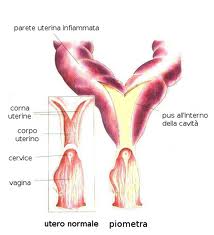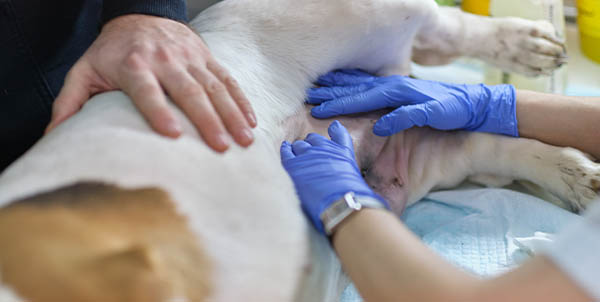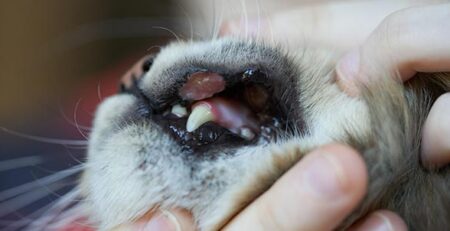Female dog pyometra: how to recognize the symptoms of this dangerous life-threatening uterine infection in your female dog.
Pyometra is a disease affecting the reproductive system of unneutered female dogs.
It consists of a buildup of pus that, if not diagnosed and treated promptly, can be life-threatening.
This condition can appear in any breed and in any age group.
In female cats, the incidence of pyometra is less frequent but still present.

Why does pyometra come?
The female dog goes into heat twice a year.
Progesterone produced during ovulation prepares the uterus for pregnancy, causing it to thicken.
But if pregnancy does not occur, the uterine lining continues to increase in thickness to form cysts.
It is precisely the lack of uterine regeneration that normally occurs during pregnancy that predisposes a female dog to pyometra.
So, after the end of each heat, hormonal conditions are created in the uterus that may be conducive to the proliferation of bacteria already present naturally in the uterus or coming from outside through the cervix.
The cervix is the gateway to the uterus
If the uterus is normal, the environment is unfavorable for bacterial survival.
However, when the uterine wall is thickened and cystic, ideal conditions for bacterial growth exist.
The main bacterium responsible for this condition isEscherichia coli, which has a pronounced susceptibility to uterine mucosal receptors.
How many types of pyometra?
There are two types of pyometra, open cervix and closed cervix.
Open cervix pyometra occurs when pus produced in the uterus exits outside through the vagina, so the dog has a vaginal discharge containing pus and blood.
In pyometra with a closed cervix, pus cannot escape and accumulates in the uterus, progressively dilating it.
Symptoms of pyometra
If the discharge is not present and visible, symptoms referable to pyometra are a state of general malaise in the dog manifested by inappetence, apathy, vomiting, a sharp increase in water requirements, followed by an increase (in frequency and quantity) in urination.
The severity of the disease depends on the toxins released by the bacteria.
Absorbed through the circulatory system, the bacteria cause systemic intoxication that is also characterized by alterations in the renal glomeruli, resulting in a predisposition to eventual renal failure.
When the uterine wall comes to rupture, a state of septicemia sets in, which can lead the dog to shock and death in a very short time.
How is pyometra diagnosed in the female dog and how does the Veterinarian intervene
Diagnosis is based on the association between history, symptomatology, and diagnostic investigations.
Of the latter, ultrasonography gives the certainty of diagnosis, allowing determination of the size of the uterus, the thickness of its walls, and the presence of accumulated pus inside.
Treatment of pyometra is surgical and involves complete removal of the uterus and ovaries.
How to prevent pyometra?
The only way to do prevention for this disease is to spay the bitch after the first heat, once she reaches sexual maturity.
Sterilization, moreover, also lowers the likelihood of developing mammary tumors.
The risks of surgery in healthy individuals are really minimal, and in terms of prevention and protection of the dog, the benefits are maximal.
In this regard, we would like to remind you that the veterinary doctors on our staff are always available to provide you with the advice and guidance you need to properly manage your dog.
Book an appointment and request a consultation: Clinica La Veterinaria is always open h24 every day including holidays and with Emergency Service from 8 pm to 8 am.
For the joy of seeing them HAPPY











